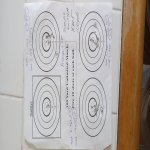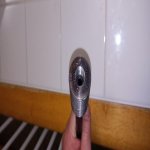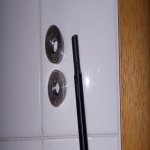Mystic Precision
CGN Ultra frequent flyer
- Location
- Summerland, BC
Yep, and I agree, in theory, tuning the harmonics of a rifle barrel should work.
Years ago I was involved in a test on the cryogenic treatment of rifle barrels. We used three shooters, including a benchers champion and we used multiple different rifles of different calibers. The long and the short of it was that cryogenic treatment helped the most with crappy barrels, because clearly they had the most internal stresses. Good quality barrels mounted properly in a high end action and bedded properly saw much less improvement from cryogenic treatment. Cryogenics was all about reducing internal stresses in the metal, which ultimately affect the harmonics of the barrel.
I think Jerry has a valid point as well, and as an experienced shooter he is pre-conditioned to be able to realize the improvements of a tuner, where the majority of shooters are simply not.
Appreciate your confidence in my skill set.... I have had the pleasure of shooting alot, over a huge range of platforms so get to see the good, bad and ugly. Reloading Centerfire for high level F class competition, teaches you alot of what affects the ammo... and by extension, rifle. Returning back to rimfire after many years away, the same issues prevail but today, shooter are more inclined to throw buckets of money at the problems, often not understanding what helps and what doesn't.
The Number1 thing rimfire shooters have to understand... their ammo, more then likely, SUCKS. With my own lot testing of mid grade types, I have seen lots where 30% flyers occured. That can be as little as 1 flyer in 1- 10rds mag, followed by a crap ton of outs in the next... or just a frustrating average of 2 to 4 outs each mag. Some lots are way better... some boxes within that lot are way worst.
Why some shooters can't repeat their results.... it may not be them nor their rifle... and why after dropping huge dollars on the 'best' rifles, their on target results don't really change all that much (100yrds to 400yds) vs less costly/fancy customs and even factory rifles costing peanuts. Rimfire ammo IS the rate limiting step.
So the holy grail of this game is to find that lot of affordable ammo that behaves ie puts bullets in a group small enough to be desireable, and then buying ALL OF IT.
OR... using a device that can help marriage GOOD ammo with a GOOD barrel.

Maybe this will help demonstrate what I mean... this is a Scorpio (Annie clone) with a tuner, shooting Lapua XACT at 100m (not 100yds at indicated on target). Conditions are near fantastic with little to no wind, no mirage. I am on a stable rest with my MPOD and rear bag... as stable as a rifle can be. High mag scope with very clear glass and a fine aiming dot.
I have circled the fliers in this very expensive ammo type (and why these 2 bricks sat around unsold for so long.. until unfortunately, I bought them).
How do I know these are flyers? Because with the same hold through out the group, the shots were landing on top of each other and then a ZINGER... no change in condition, next shot, same hold, right back into the group. And like every good flyer, there is no rhyme nor reason to where it ends up.... nor how far away from group it lands. Nor which shot the flyer will occur.
So I have a system where the CORE of the combo is around 0.8/0.9" at 100m... with outs pushing the group much larger. If you have an ammo type, where the number of flyers was much higher, the results are going to vary a ton from group to group... and random rarely repeats.
If you are going to the expense of adding a tuner, use the HIGHEST grade of ammo you can find and a couple of lots just in case... or just accept the good and bad of your current batch of ammo and do your best to mitigate the outs. Hopefully, the out still lands in a useful location on your target.
I am starting to see alot of upside to an AIR RIFLE...
Jerry
Attachments
Last edited:












































































